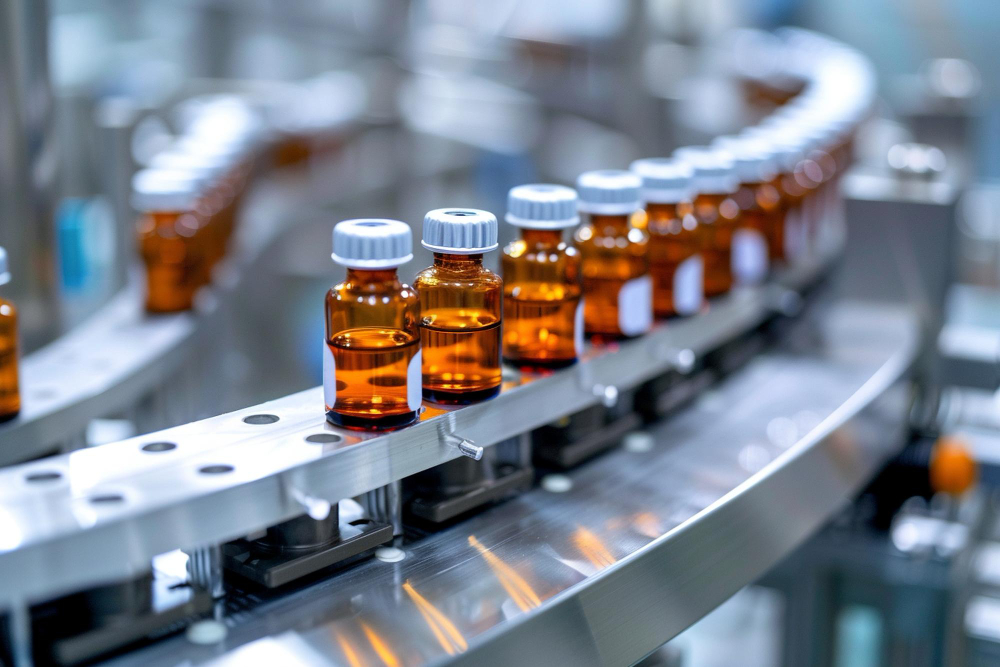Choosing the right bin blender for your manufacturing or pharmaceutical process can feel overwhelming, but it doesn’t have to be. Bin blenders are essential for achieving consistent and high-quality mixing of powders and granules. They particularly benefit industries like pharmaceuticals and food production. With so many options available, how do you ensure you’re making the best decision?
This guide outlines seven critical questions to consider before investing in a bin blender. From understanding your material needs and production demands to evaluating construction materials and cleaning systems, we cover everything you need to know. By the end, you’ll have a clear framework to identify the perfect bin blender for your operations.

Ready to Purchase a Bin Blender?
A bin blender is a versatile piece of equipment designed for the homogeneous mixing of dry powders and granules. This equipment is commonly used in industries such as pharmaceuticals, food, and chemicals.
A bin blender works by rotating a container—often referred to as a bin—around a fixed axis. This motion ensures that materials are evenly distributed without degradation or contamination. Its modular design allows for easy loading, unloading, and cleaning. This feature makes the bin blender an ideal choice for high-demand manufacturing environments.

| Consideration | Key Points |
| 1. Type of Materials | – Assess material properties like particle size, flowability, and density. |
| – Consider specific requirements for pharmaceutical applications. | |
| 2. Blend Uniformity | – Ensure consistent blending, especially in pharmaceuticals. |
| 3. Production Volume & Batches | – Evaluate daily production and batch needs to select the right equipment. |
| 4. Blender Construction Materials | – Stainless steel is ideal for durability and easy cleaning, especially in pharmaceutical applications. |
| 5. Motor Power | – Ensure the motor can handle varying loads without causing downtime. |
| 6. Safety Features | – Look for safety locks, secure seals, and ergonomic designs to protect operators and products. |
| 7. Cleaning Method | – Verify the blender supports clean-in-place (CIP) systems for easy and hygienic cleaning. |
Not all bin blenders are suited for every type of material. Evaluate the characteristics of your materials, such as particle size, flowability, and density.
For pharmaceutical applications, specific finishes may be required to prevent sticking, clumping, or contamination. Understanding your material’s properties ensures you select a bin blender that delivers consistent results.
Achieving consistent blend uniformity is crucial, particularly in the pharmaceutical industry. The latter requires precision that affects product efficacy and safety.
Consider the bin blender’s working capacity and its ability to deliver homogeneous mixing. Ensure the equipment you choose meets your specific uniformity standards. This will help maintain quality across batches.
Production needs will determine the size and type of bin blender you require. Calculate your daily output and the number of batches needed to meet demand. Selecting a bin blender with the appropriate working capacity ensures you can meet production goals without overburdening your equipment.
The construction materials of a bin blender are critical to its durability, hygiene, and compatibility with your materials. Stainless steel is a common choice in pharmaceutical-grade equipment. This is due to its resistance to corrosion and ease of cleaning. Make sure the materials comply with industry standards and your specific operational requirements.
Motor power affects the blender’s efficiency and ability to handle varying loads. A powerful motor ensures smooth operation. This also applies even with dense or heavy materials.
You should also verify the motor specifications and confirm they align with your blending requirements. By so doing, you are avoiding unnecessary downtime.
Safety features are a priority, especially in pharmaceutical manufacturing where operator protection and contamination prevention are paramount. Look for features such as safety interlocks, secure sealing, and ergonomic design. These measures help protect both operators and products.
Efficient cleaning processes minimize downtime and ensure compliance with hygiene standards. Many modern bin blenders offer clean-in-place (CIP) systems for effortless and thorough cleaning. Confirm that the blender’s cleaning system is compatible with your operational requirements and materials.
Beyond the seven key questions, it is important to consider the overall integration of the bin blender into your production line. Factors like automation capabilities, scalability, and software integration can greatly enhance operational efficiency. Modular designs allow easy upgrades to adapt to evolving production demands.
Investing in a bin blender that supports predictive maintenance can also save costs in the long run. Innovative monitoring systems detect wear and optimize performance, ensuring consistent uptime for your operations. These features make bin blender solutions a future-proof choice for modern manufacturing environments.
Canaan’s bin blenders are designed to meet the diverse needs of the pharmaceutical and manufacturing industries. With options for customization, high-quality construction, and advanced safety and cleaning features, Canaan’s equipment ensures efficient and reliable blending processes. Their bin blender’s working capacity ranges accommodate various production scales, making them a trusted choice for operations worldwide.
Evaluate your daily production needs, including batch sizes and frequency. Ensure the blender’s working capacity aligns with these requirements to meet your demands.
Pharmaceutical-grade bin blenders are often made of stainless steel. This makes the equipment resistant to corrosion, easy to clean, and compliant with hygiene standards. The material ensures product safety and long-lasting durability.
Yes, many modern bin blenders are designed for seamless integration into automated production lines. Features like software compatibility, modular upgrades, and predictive maintenance enhance efficiency and scalability.
Investing in a well-designed bin blender not only optimizes your workflow but also ensures compliance with industry standards. It also supports long-term operational success. Modern bin blenders feature advanced safety mechanisms, durable construction, and seamless production line integration. They’ve become essential in the pharmaceutical and food manufacturing industries.
Canaan‘s bin blender series offers high-performance, reliable, and scalable solutions. Strategic equipment selection can drive operational efficiency and sustained growth.




Manufacturing pharmaceutical products should always be taken seriously. That is, every process must follow the strictest and highest standards. This is the very reason why manufacturers prefer hiring an EPC contractor. Contractors working under EPC contracts will ensure the outcomes are of the best quality no matter what happens, focusing on the construction of the […]

Explore the importance of EPC contracts in pharmaceutical manufacturing. Learn how EPC works, its benefits, and why choosing an EPC contractor can guarantee project success with Canaan’s industry-leading equipment.

Discover how SCADA and PLC improve automation in the pharmaceutical industry. Learn their roles, benefits, and how Canaan’s advanced technology enhances efficiency and safety.